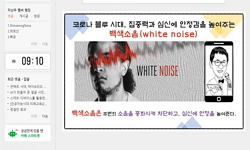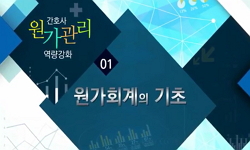The purpose of this study was to examine the relationships between nurses’ performance of noise management, noise experience, noise-related knowledge, response to noise, and patient safety culture and to identify factors affecting nurses’ performa...
http://chineseinput.net/에서 pinyin(병음)방식으로 중국어를 변환할 수 있습니다.
변환된 중국어를 복사하여 사용하시면 됩니다.
- 中文 을 입력하시려면 zhongwen을 입력하시고 space를누르시면됩니다.
- 北京 을 입력하시려면 beijing을 입력하시고 space를 누르시면 됩니다.
성인중환자실 간호사의 소음관리 수행도에 영향을 미치는 요인 = Factors Affecting Nurses’ Performance of Noise Management in Adult Intensive Care Units
한글로보기https://www.riss.kr/link?id=T16440242
- 저자
-
발행사항
진주 : 경상국립대학교 대학원, 2022
-
학위논문사항
학위논문(석사) -- 경상국립대학교 대학원 , 간호학과 간호학 , 2022. 8
-
발행연도
2022
-
작성언어
한국어
- 주제어
-
발행국(도시)
경상남도
-
형태사항
vii, 75 p. ; 26 cm
-
일반주기명
지도교수: 민해영
-
UCI식별코드
I804:48003-000000032088
- 소장기관
-
0
상세조회 -
0
다운로드
부가정보
다국어 초록 (Multilingual Abstract)
The purpose of this study was to examine the relationships between nurses’ performance of noise management, noise experience, noise-related knowledge, response to noise, and patient safety culture and to identify factors affecting nurses’ performance of noise management in adult intensive care units.
The subjects of this study were 148 nurse in adult intensive care unit with over 3 months of clinical experience working at advanced general hospitals in J and C cities. Data were collected from April 1st to 20th, 2022.
The collected data were analyzed using frequency, percentage, mean, standard deviation, Independent t-test, one-way ANOVA, Scheffe's test, Pearson's correlation coefficient, and hierarchical multiple regression analysis by SPSS/WIN 25.0 program.
The results of this study are summarized as follows.
1) The general characteristics of nurses in adult intensive care units were as follows. The nurses’ mean age was 28.36±4.29 years old and most of them was general nurses (96.6%). The mean years of nurses’ nursing experience was 5.52±4.34 years and the mean years of working experience in the intensive care unit was 4.23±2.30 years. Regarding noise-related characteristics, 35 nurses (23.6%) reported that the unit applied ‘quiet time’ and ‘quiet time’ was applied between midnight and 8 am. However, 113 nurses (76.4%) reported that the unit did not apply ‘quiet time.’ 147 nurses (99.3%) reported that they had no experience of receiving education on noise management. 112 nurses (75.5%) reported that the education on noise management is needed.
2) The mean score of noise experience frequency was 3.05±0.62 (range 1-4). The mean scores of its subcategories were: 3.41±0.62 of medical device factors, 2.99±0.63 of human factors, 2.96±0.84 of environmental factors. The mean score of perceived noise levels was 4.69±1.51 (range 0-10). The mean scores of its subcategories were: 5.93±1.84 of medical device factors, 4.50±1.51 of human factors, 4.05±1.90 of environmental factor. The total score of noise-related knowledge was 28.91±9.98 (range 0-54) and the percentage of correct answer was 54%, which was generally low. The mean score of response to noise was 4.89±2.32 (range 0-10). The mean scores of its subcategories were: 4.22±2.29 of physiological response and 5.42±2.55 of emotional response. The mean score of patient safety culture was 3.52±0.49 (range 1-5). The mean scores of its subcategories were: 3.86±0.66 of patient safety knowledge and attitude, 3.72±0.63 of teamwork, 3.62±0.71 of leadership, 3.53±0.72 of patient safety policy and procedure, 3.30 ±0.74 of patient safety improvement system, 3.26±0.83 of non-punitive environment, and 2.86±0.70 of patient safety priority. The mean score of performance of noise management performance was 3.45±0.64 (range 1-5).
3) There was a significant difference between the necessity of noise management education in nurses’ performance of noise management (t=2.66, p=.009).
4) There were significant positive relationships between nurses’ performance of noise management and noise experience frequency (r=.20, p=.013), noise-related knowledge (r=.21, p=.009), response to noise (r=.23, p=.005) as well as patient safety culture (r=.50, p<.001).
5) The factors affecting nurses’ performance of noise management in adult intensive care units were noise experience frequency (β=.16 p<.030), teamwork of patient safety culture (β=.33, p=.006) and patient safety policy and procedure of patient safety culture (β=.25, p=.037) explaining 37.9% of the variance.
In conclusion, the factors affecting nurse’ performance of noise management in the adult intensive care unit were noise experience frequency, teamwork of patient safety culture, and patient safety policies and procedures of patient safety culture. Based on these results, we suggest that the a noise reduction intervention program should be developed using teamwork reinforcement and team approach to improve performance of noise management for nurses in adult intensive care units. Also, in addition to nurses’ personal efforts for noise management, organizational efforts and strategies are needed by establishing patient safety policies and procedures related to hospital noise at the hospital level.
목차 (Table of Contents)
- Ⅰ. 서론 1
- 1. 연구의 필요성 1
- 2. 연구목적 4
- 3. 용어정의 5
- Ⅱ. 문헌고찰 7
- Ⅰ. 서론 1
- 1. 연구의 필요성 1
- 2. 연구목적 4
- 3. 용어정의 5
- Ⅱ. 문헌고찰 7
- 1. 성인중환자실의 소음관리 수행 7
- 2. 성인중환자실의 소음관리 수행의 영향요인 11
- 1) 소음의 경험실태 11
- 2) 소음에 대한 지식 13
- 2) 소음에 대한 반응 14
- 3) 환자안전문화 16
- Ⅲ. 연구방법 20
- 1. 연구설계 20
- 2. 연구대상 20
- 3. 연구도구 21
- 4. 자료수집방법 24
- 5. 자료분석방법 24
- 6. 윤리적고려 25
- Ⅳ. 연구결과 26
- 1. 대상자의 일반적 특성 및 소음관련 특성 26
- 2. 대상자의 소음의 경험실태, 소음에 대한 지식, 소음에 대한 반응, 환자안전문화 및 소음관리 수행도의 정도 28
- 3. 대상자의 일반적 특성 및 소음관련 특성에 따른 소음의 경험실태, 소음에 대한 지식, 소음에 대한 반응, 환자안전문화 및 소음관리 수행도의 차이 31
- 4. 대상자의 소음원에 대한 경험빈도와 소음정도, 소음에 대한 지식, 소음에 대한 반응 및 환자안전 문화와 소음관리 수행도의 상관관계 36
- 5. 대상자의 소음관리 수행도에 영향을 미치는 요인 39
- Ⅴ. 논의 41
- Ⅵ. 결론 및 제언 49
- 참고문헌 53
- 부 록 59












